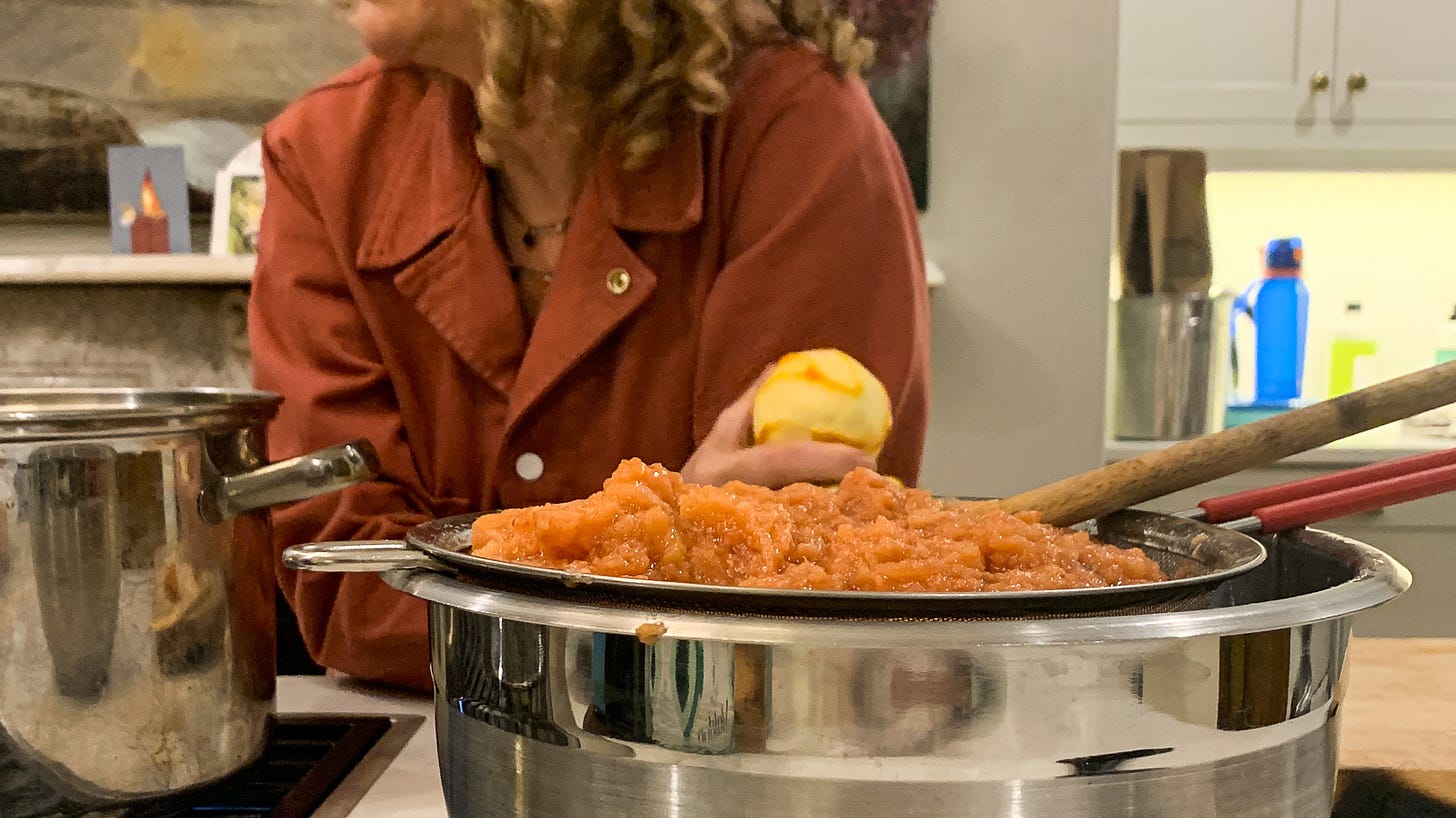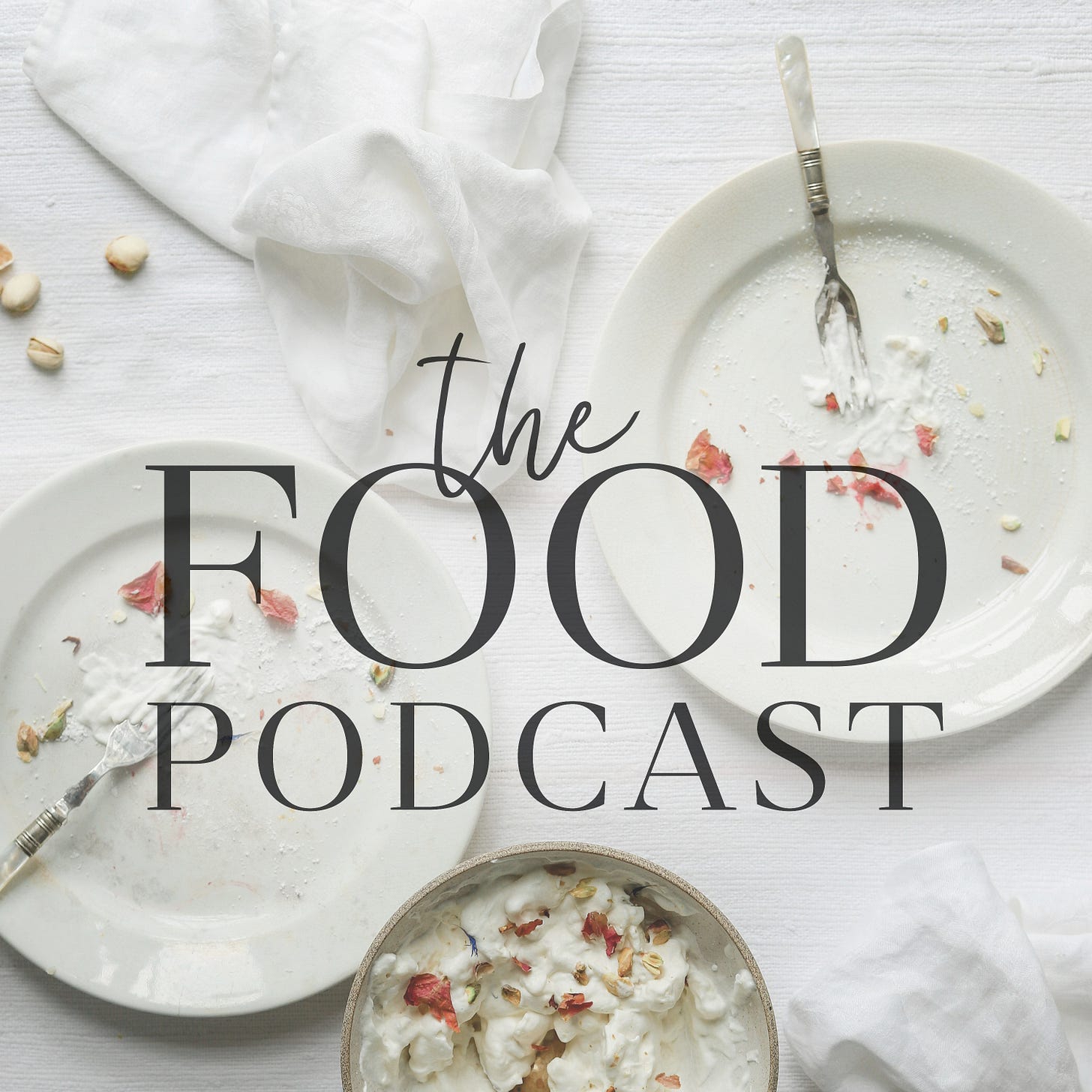Quinces fresh from the tree have a floral top note, a middle note of ripe pear and a bottom note of guilt. Once I’ve secured a coveted source, they sit in a bag on the cool floor in the back porch, greeting me all day with this perfume. I make such a fuss to get them ( there was that dealer from the south shore with access to his father’s orchard, a friend with a prolific tree in her garden who would slot me in for a picking every other year, or this year, when I callously shewed away a doe and her fawn who moved in on my freshly discovered, urban tree ) that turning them into something special is an obvious next step. But this means carving out a day in the kitchen, chopping, simmering, mashing, straining, moulin-ing, and if poaching is on the menu, coring and peeling too.
Eventually I make the time, this year with a friend who wore a jumpsuit the colour of cooked quince. We filled the kitchen with music and together we transformed the white-fleshed, bumpy, gnarly, yellowy-green-skinned quince into a rich, burnished red sauce. The flesh itself is bitter and astringent, you know the way red wine can feel textured in the mouth, almost rough? That’s from all the tannins in the wine AND in quince.
This is what happens when I resist procrastination. Momentum builds and the next thing I know I’m researching how tannins bond with saliva to create texture in our mouths. Here’s an excerpt from next week’s podcast episode, a teaser, shall we say, if food science lights you up -
Saliva is there to help food particles slide smoothly in our mouths, but when tannins are present, the proteins clump together and stick to the surfaces in the mouth, creating friction. That’s the tactile, rough feeling I was talking about.
Tannins make quince taste bad. So in order to make quince edible, the tannins need to be destroyed. This is done by cooking them down, down, down… until the hard, tannic, astringent fruit has softened into a delicate, flowery, aromatic miracle.
But how does the flesh turn red? The clusters of tannins in the fruit are made up of pigments called ‘anthocyanins’. When you heat tannins, anthocyanins are released. Anthocyanin is from the Greek ‘antho’ meaning flower, and ‘cyan’ for blue. They colour most of the red, blue and purple colours of plants - like tomatoes, strawberries and cabbage. But when they are exposed to an acidic environment, like lemon juice, the tannins unravel, the fruit turns red, anthocyanins are released, until you have a softened, delicate, flowery, aromatic RED miracle.
My friend and I were inspired that day by Flora Shedden’s recipe for poached quince - peeled, cored, sliced and gently simmered in a sweet, watery bath kissed with peels of lemon, orange and powdered ginger. But the slices of quince softened much faster than they should have, and soon we were looking at a pretty pink but broken mess. So we strained out the soft fruit, simmered the liquid down and mixed the two back together again. We were looking for the consistency of something spoonable onto yogurt or oatmeal, or to dollop onto a fat wedge of brie. It was perfect.
Quince, incidentally, also has a note of forgiveness in its scent profile.
That jumpsuit -
And the sauce, the next morning, over oatmeal and yogurt -








I love to simmer down that liquid until it’s reduced to a syrup. Lasts for some time and is amazing over ice cream.